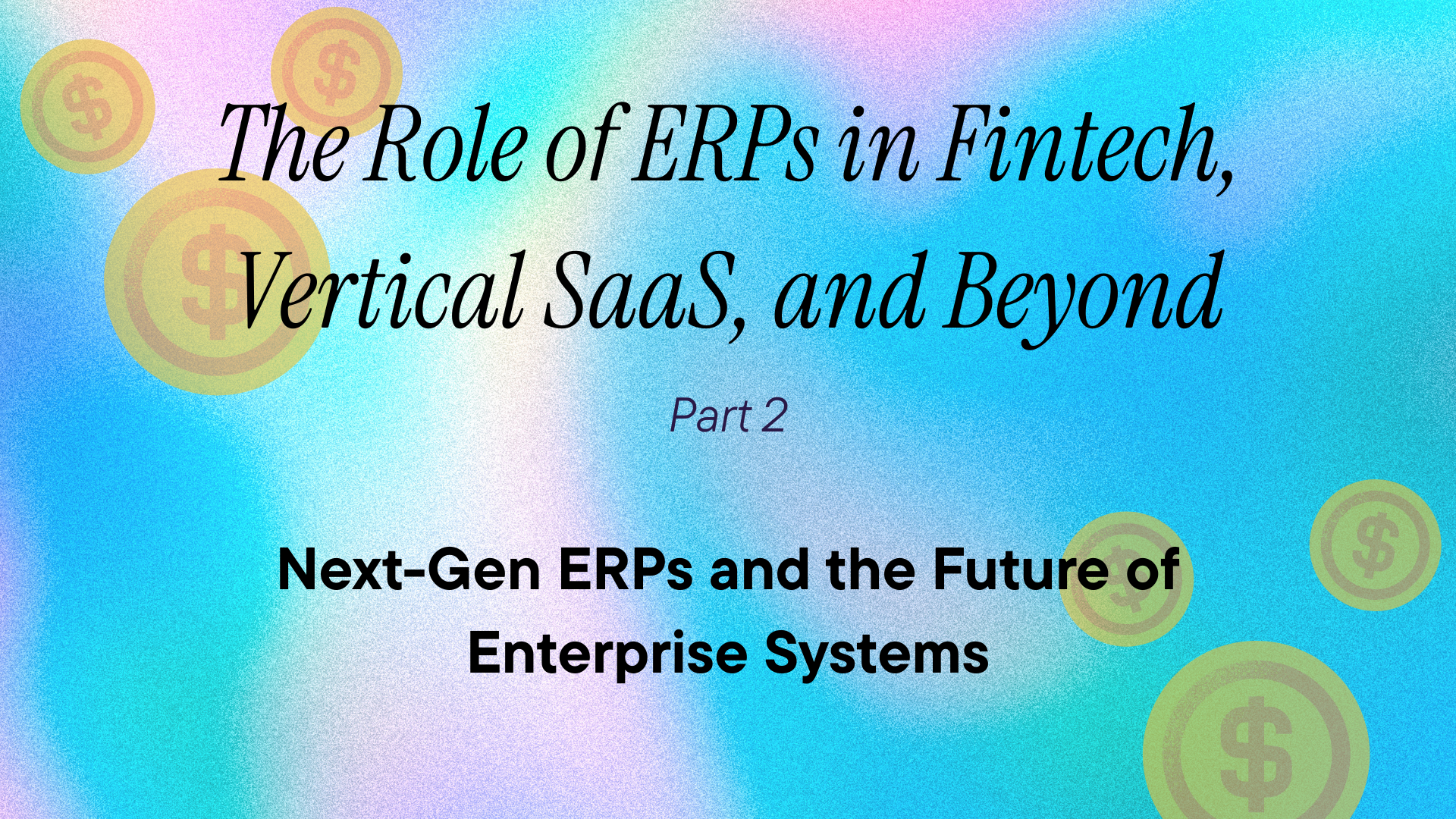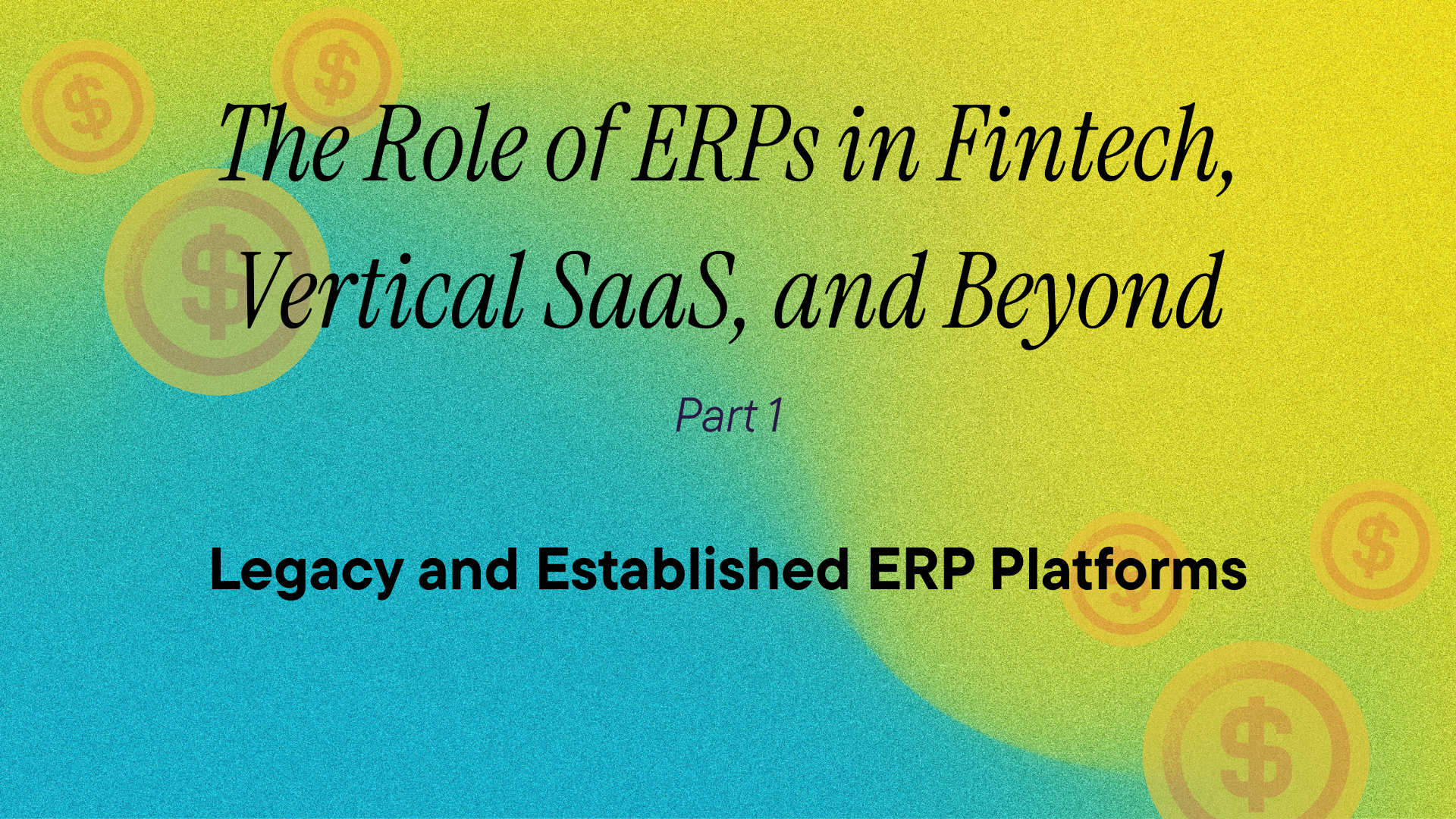The Evolution Continues: From Legacy to AI-Native
In Part 1 of this series, we examined the established ERP landscape from enterprise giants like SAP S/4HANA commanding the Fortune 500 market, to accessible entry points like QuickBooks Enterprise serving small businesses, to cloud pioneers like NetSuite, Dynamics 365, and Sage Intacct transforming the mid-market. These platforms, while powerful, still carry the DNA of traditional enterprise software: lengthy implementations (3-36 months), significant investment requirements ($50K to $20M), and complex customization needs.
But what if enterprise resource planning could be fundamentally different? What if implementations took weeks instead of months? What if AI could eliminate 80-93% of manual accounting operations? What if natural language could replace SQL queries?
This is the promise of next-generation ERP platforms that aren't just cloud-native but AI-native, built from the ground up for the modern, fast-moving business environment. While established vendors add AI features to existing architectures, these new platforms embed intelligence and automation into their core design, delivering unprecedented speed, flexibility, and ease of use.
Odoo: Setting the European Standard for Modular ERP
Odoo has established significant market presence in Europe and APAC by addressing a critical challenge facing technology leaders: application proliferation and fragmentation.
Rather than managing disparate tools for accounting, CRM, inventory, and project management, Odoo provides a unified platform architecture. Designed with modularity as a core principle, the system scales effectively from startup accounting requirements to comprehensive enterprise resource planning without requiring disruptive system replacements.
Key Differentiators of Odoo:
- Genuine Modularity: Organizations can progressively implement accounting, CRM, and warehouse management modules aligned with growth requirements
- Unified Data Architecture: Eliminates data synchronization challenges between disparate systems like Salesforce and accounting platforms
- European Engineering Standards: Designed for regulatory compliance, multi-currency operations, and complex organizational structures
- Open Source Foundation: Provides data ownership and customization flexibility without vendor dependency
The technical advantages are compelling: unified database architecture, single authentication framework, and consistent API structure. Engineering teams maintain one integration point rather than managing multiple middleware connections susceptible to vendor-initiated disruptions.
The AI-Native Revolution: Dualentry, Rillet, and Campfire
While Odoo evolved from traditional ERP foundations, a new category of platforms has emerged with AI and automation as fundamental architectural principles. These solutions represent genuine AI-native design rather than superficial feature additions. They're systems architected around machine learning and intelligent process automation.
Dualentry: Finance-First Engineering
Dualentry addresses the challenge of finance teams overwhelmed by manual processes while engineering teams develop costly custom automation solutions.
Key Performance Indicators:
- Potential annual savings up to $1.1M in engineering costs through native automation
- 4-week implementation timeline compared to 6-12 months for traditional ERPs
- Developed by professionals with both accounting and engineering expertise
The platform provides native integrations with payroll systems, banking APIs, and expense management platforms. Rather than developing custom connectors for Rippling, Gusto, or Ramp, organizations receive pre-built integrations. AI capabilities handle transaction categorization, duplicate detection, and basic reconciliation, which eliminates the need for custom scripting.
Engineering teams can focus on core product development rather than serving as the finance department's integration support.
Rillet: Enterprise-Grade Automation at Scale
Rillet targets the substantial $500B+ ERP market, focusing on mid-market organizations that have exceeded QuickBooks capabilities but require alternatives to lengthy SAP implementations.
Performance Metrics:
- Automates 80-93% of routine accounting operations
- Delivers 25% reduction in operational expenses compared to traditional ERPs
- Achieves 18% decrease in system maintenance requirements
- Enables zero-day financial close capabilities
The platform automates multi-entity consolidation and investor reporting. Currency conversions, inter-company eliminations, and regulatory compliance occur without custom development. The 4-week implementation timeline results from reduced configuration requirements. AI learns organizational patterns rather than requiring extensive customization.
This leads to reduced configuration overhead, enabling greater focus on product features that drive competitive differentiation.
Campfire: Natural Language Finance Operations
Campfire introduces an innovative approach: making sophisticated financial operations accessible through conversational interfaces while maintaining enterprise-grade capabilities.
Core Differentiators:
- Ember AI enables plain English financial queries ("Display Q3 revenue by customer segment")
- Comprehensive SaaS ecosystem integration, including Salesforce, Ramp, and Rippling
- Native multi-entity and multi-currency support
- AI-powered reconciliation with anomaly detection
This allows finance teams to query data using natural language instead of constructing SQL queries or custom reports. The system generates analyses, identifies patterns, and recommends actions. For development teams, this reduces ad-hoc data requests and enables focus on core product development.
Industry Applications: Strategic Value Creation
Fintech: Advanced Financial Operations
Traditional accounting software inadequately addresses fintech requirements. Organizations manage complex transaction flows, regulatory reporting requirements, and multi-entity structures beyond conventional software capabilities.
Next-gen ERP Capabilities:
- Real-time transaction processing and reconciliation
- Automated compliance reporting (SOX, regulatory filings)
- Multi-entity consolidation across regulatory jurisdictions
- Native integration with banking APIs, payment processors, and cryptocurrency platforms
Payment processors utilizing Rillet can automatically reconcile millions of micro-transactions, generate regulatory reports, and manage currency conversions without custom engineering.
Vertical SaaS: Industry-Specific Integration Requirements
Vertical SaaS platforms face unique ERP challenges as they serve specialized industries with distinct operational and compliance requirements. These platforms must balance deep industry functionality with flexible financial management while maintaining seamless data flow between specialized operations and accounting systems.
Next-gen ERP Advantages for Vertical SaaS:
- Industry-specific data models that understand unique business objects (patients in healthcare, properties in real estate, matters in legal)
- Pre-built compliance frameworks for regulated industries (HIPAA for healthcare, trust accounting for legal)
- Automated industry-specific workflows (construction job costing, restaurant inventory management)
- Native integration with specialized industry tools and marketplaces
AI-Native ERP Integrations:
- Healthcare platforms (patient billing, insurance claims processing)
- Construction management (project accounting, subcontractor payments)
- Property management (rent collection, maintenance tracking)
- Legal practice management (trust accounting, matter-based billing)
Vertical SaaS companies utilizing platforms like Rillet or Campfire can automatically handle complex industry-specific accounting requirements, from construction retainage to healthcare revenue cycle management, without building custom financial infrastructure. This enables vertical SaaS providers to focus on their core industry expertise while leveraging robust financial operations.
Cross-Industry Applications The modular approach demonstrates scalability across sectors:
- SaaS Companies: Revenue recognition, subscription billing, customer lifetime value analysis
- E-commerce: Inventory management, multi-channel reconciliation, supplier finance
- Professional Services: Project accounting, resource allocation, client billing
- Manufacturing: Supply chain finance, inventory valuation, multi-location operations
Strategic Implications for Technical Leadership
The ERP transformation represents a fundamental shift in resource allocation priorities.
Legacy ERP Characteristics:
- 6-12 month implementation cycles
- Custom integrations for each vendor relationship
- Engineering teams maintain financial system integrations
- Extended timelines for custom reporting
Entry-Level ERP Reality (QuickBooks Enterprise):
- 2-8 week implementation timeline
- Limited API access requiring middleware for integrations
- Basic automation and workflow capabilities
- Natural upgrade path to full ERP systems as businesses grow
Established Cloud ERP Reality (NetSuite, Dynamics 365, Sage Intacct):
- 3-6 month implementation periods
- Pre-built integrations with major business applications
- Regular platform updates without disruption
- Self-service reporting with some technical configuration
Next-Generation ERP Advantages:
- 4-week implementation periods
- Native integrations with modern SaaS platforms
- AI-driven routine data processing
- Self-service analytics and reporting capabilities
Organizations must evaluate their current position and growth trajectory. Starting with QuickBooks Enterprise may be appropriate for small businesses, but planning for eventual migration is essential. The choice between enterprise platforms like SAP, established cloud leaders, and AI-native platforms reflects an organization's size, complexity, industry requirements, and appetite for innovation versus stability. The 2027 deadline for SAP ECC support adds urgency for many enterprise decisions.
Platform Selection Framework
The ERP landscape now offers distinct categories of solutions, each addressing specific organizational needs and maturity levels.
Enterprise Platforms:
- SAP S/4HANA: The standard for large enterprises requiring deep industry functionality, complex customization, and global scale
- SAP Business One: Ideal for SMBs seeking enterprise-grade capabilities with simplified implementation
Established Cloud Leaders:
- NetSuite: Optimal for fast-growing companies requiring comprehensive ERP functionality with global capabilities
- Dynamics 365 Business Central: Ideal for SMBs embedded in the Microsoft ecosystem seeking familiar interfaces
- Sage Intacct: Best for finance-first organizations requiring sophisticated financial management without full ERP complexity
Modern Modular Platforms:
- Odoo: Suitable for organizations requiring proven modularity and European compliance standards
AI-Native Innovators:
- Dualentry: Recommended for rapid implementation with robust automation requirements
- Rillet: Appropriate for complex multi-entity organizational structures
- Campfire: Ideal when natural language interfaces and comprehensive SaaS integration are priorities
The critical decision factors include organizational size, industry requirements, implementation timeline, total cost of ownership, and the balance between proven functionality versus cutting-edge innovation. While SAP dominates the enterprise segment with unmatched depth and QuickBooks Enterprise provides an accessible entry point, the middle market presents the most diverse options, from established cloud leaders to AI-native innovators.
The Integration Challenge: Customer System Connectivity
Despite internal ERP advancement, organizations face a persistent challenge: customer accounting platform diversity. While internal operations may utilize Rillet or Campfire, SaaS products must integrate with customer systems, such as QuickBooks, Xero, NetSuite, Sage, or numerous other platforms.
Developing and maintaining individual integrations for each accounting platform represents precisely the engineering overhead that modern ERPs aim to eliminate. Each platform presents unique APIs, authentication protocols, data models, and rate limitations. Engineering teams invest months in integration infrastructure rather than product innovation.
The Unified API Solution
Apideck's Unified API transforms this challenge. A single integration provides comprehensive access to major ERP platforms. Organizations build once and connect universally, rather than developing multiple separate connectors.
Developer Experience:
- Consistent API specification across accounting platforms
- Normalized data models eliminating platform-specific mapping requirements
- Unified authentication and webhook management
- Production-ready error handling and rate limiting
Business Impact:
- Reduce integration delivery from months to days
- Support new accounting platform requests without custom development
- Concentrate engineering resources on product differentiation
- Scale to enterprise customers with sophisticated accounting requirements
A comprehensive ERP strategy must address customer integration requirements. Apideck manages the technical infrastructure, enabling organizations to focus on building differentiated products that drive business value.
Ready to get started?
Scale your integration strategy and deliver the integrations your customers need in record time.








